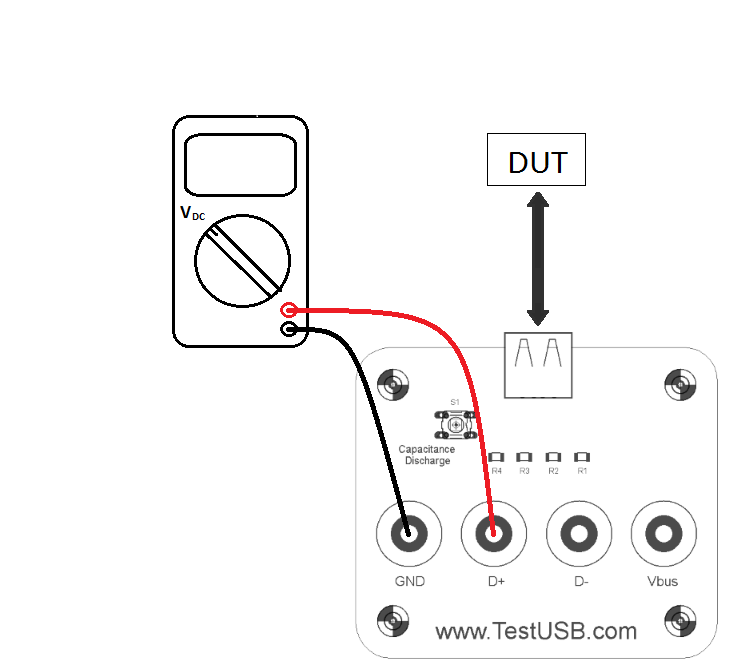Back Voltage
USB 2.0 Specification, Section 7.1.2 & 7.1.5
No USB device shall supply current on VBUS
at its upstream facing port at any time, a USB device may only draw
current. The pull-up resistor D+ or D- may only become present when
VBUS is High. This can be verified by measuring the Voltage over Vbus
and GND, D+ and GND, D- and GND when the device is not connected with
the Back Voltage fixture.
This test must be performed twice, first before the device under test
is enumerated and the second time after it has been enumerated. All
values should remain below 400mV. A common failure is that self-powered
devices put their pull-up resistor active even when Vbus is not
detected. This will result in failure where the voltage is ~3V on the
D+ for Full Speed and High Speed devices or on D- for a Low Speed
device.
Another common mistake is that some device that are self powered or
battery powered drive back voltage on Vbus.
Test setup:

According to the www.usb.org devices/hubs that fail this
requirement
can cause upstream hubs and/or PCs to fail.
Some of the failures that
have been reported are:
- The PC fails to cold boot due to back-drive voltage effecting
motherboard reset sequences.
- Hub fails to enumerate downstream devices due to reset anomalies.
- Motherboard failures to properly resume from suspend state.
- Introduction of device/hub knocks out one or more upstream devices.
